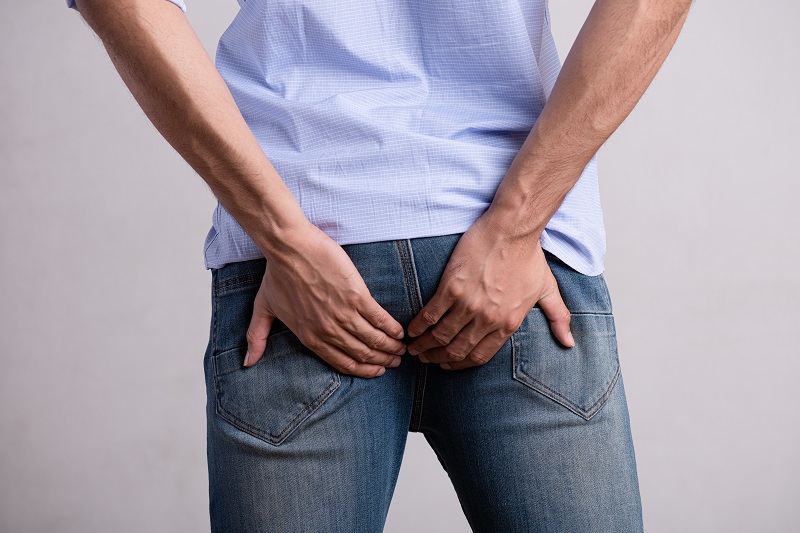What is anal fissure (anal fissure)?
 Anal fissure, with its simplest definition, is cracks that occur in the breech region due to various reasons
Anal fissure, with its simplest definition, is cracks that occur in the breech region due to various reasons
The ruptures in this area may develop due to straining and constant straining in defecation, as well as due to frequent defecation and continuous cleaning of the breech area in people with diarrhea. Cracks in the area may look simple, but they can cause severe pain due to the sensitive nature of the area. This pain is felt like a sharp object, similar to a piece of glass, stuck in the breech area during defecation. There may also be bleeding in varying amounts depending on the size of the crack. People who have anal fissure in the breech area due to constipation feel the need to keep their breech muscles constantly contracted in order to reduce the pain caused by tearing. At the same time, patients avoid going to the toilet because there is a feeling of pain with each defecation. These conditions increase the severity of constipation and prevent the healing of the disease. In some patients, the crack in the breech may have spread to a wider area in the anal canal. In this case, the recovery of the disease is more difficult, and the measures to be taken for constipation and diarrhea will have a greater share in the treatment. Due to all these reasons, people who have anal fissure problems should apply to a health institution, undergo the necessary examinations and receive treatment.
What are the symptoms of anal fissure (anal fissure)?
The symptoms of the disease are almost the same in all individuals who have a crack (anal fissure) problem in the anus. However, depending on the size of the crack, the severity of the symptoms felt may differ from person to person. The most common symptoms are as follows:
• Sensation of tearing or removing a piece of glass during defecation
• Pain and swelling in the anus
• Staining in underwear due to bleeding or slight blood leakage
• Difficulty defecating
• Itching and irritation at the tear site
All these symptoms are usually the symptoms that indicate an anal fissure. However, since some diseases such as hemorrhoids, breech abscess or warts, breech prolapse, rectal cancer may present with symptoms similar to anal fissures, there is a possibility that the condition can be confused with these diseases. Therefore, if the above symptoms are observed, patients should definitely consult a physician and have the necessary examinations and tests done.
What are the causes of anal fissure (anal fissure)?
Anal fissure may develop due to prolonged constipation, diarrhea, inflammatory bowel diseases such as Crohn's disease or ulcerative colitis, childbirth and similar causes. In addition, it is possible to develop cracks in the breech without any reason. Most of the patients have difficulty in defecation that has continued for a certain period of time before the formation of the crack. Another factor that causes crack formation is that the stool is very hard. Although the need for the toilet is felt, delaying this need causes the stool to stay in the large intestine for a longer time and harden. In addition, insufficient fluid consumption and not giving enough place to fiber products in the daily nutrition plan are among the factors that cause hard stools. Due to such reasons, stool, which has a much harder structure than it should be, causes the sensitive breech skin to crack.
Apart from the above, traumas may occur in the rectal and rectal regions in cases such as placement of rectal thermometers, colonoscopy, and enema during procedures applied for diagnosis and treatment in medicine. In such cases, it may be recommended to use creams or pomades to prevent anal fissure formation during and after the procedure.
How is the diagnosis of anal fissure (breech fissure) made?
The diagnosis of anal fissure can be easily made by a detailed physical examination by a specialist physician. If deemed necessary, endoscopy procedures can also be applied to examine the rectum or colon region. Similar breech diseases that can be confused with anal fissure should definitely be considered during the diagnosis. In some cases of anal fissure, the formation of a small breast may occur. Care should be taken as these can be confused with the hemorrhoid nozzle in some cases. A detailed medical history should be taken of the patients who apply to clinics with complaints of cracked rectum and related pain, bowel patterns should be asked, and whether there is a long-standing diarrhea or constipation problem should be investigated. If a different underlying intestinal disease or digestive problem is detected, a treatment plan should be determined in addition to the treatment of the crack.
 Anal fissure, with its simplest definition, is cracks that occur in the breech region due to various reasons
Anal fissure, with its simplest definition, is cracks that occur in the breech region due to various reasons